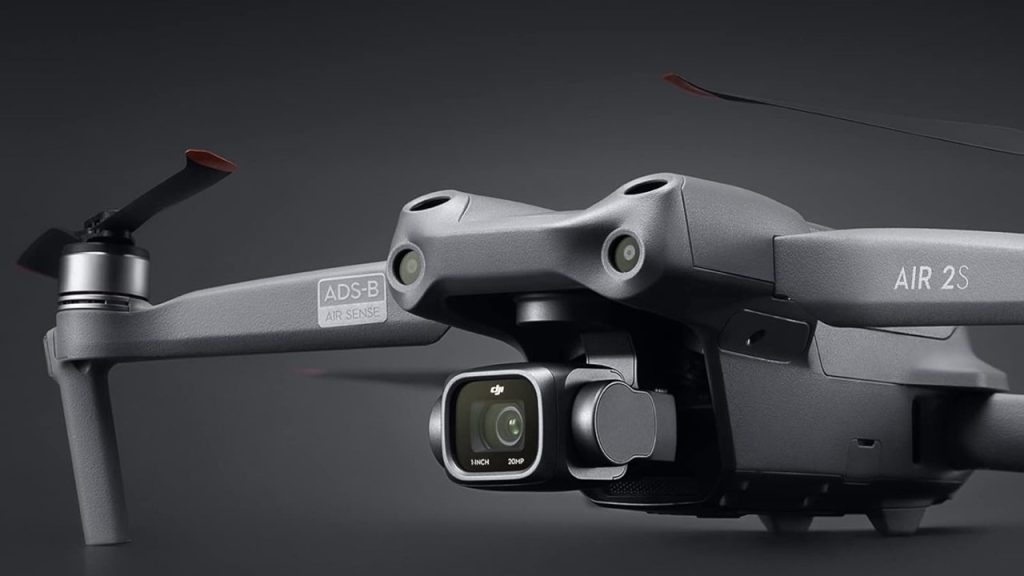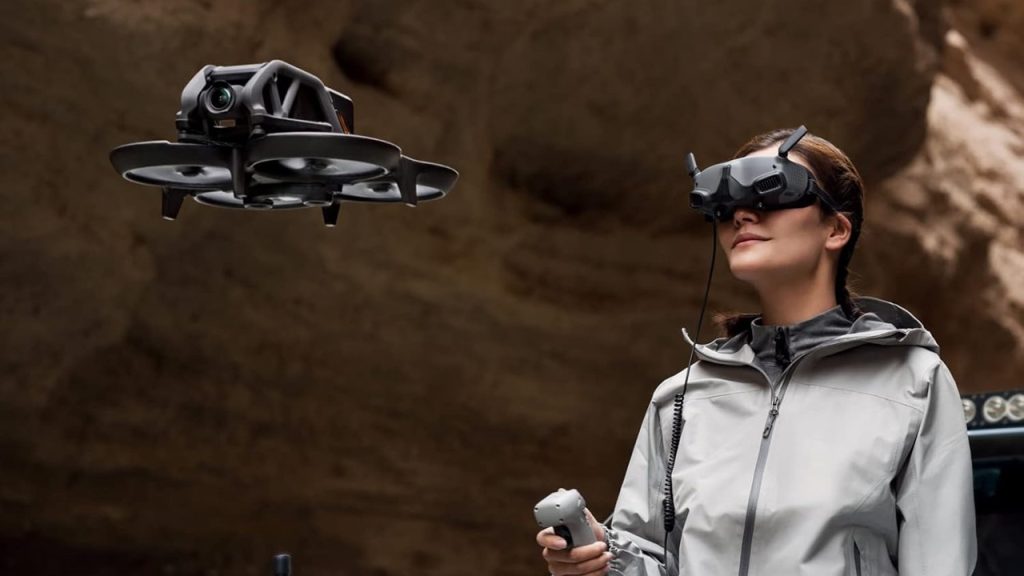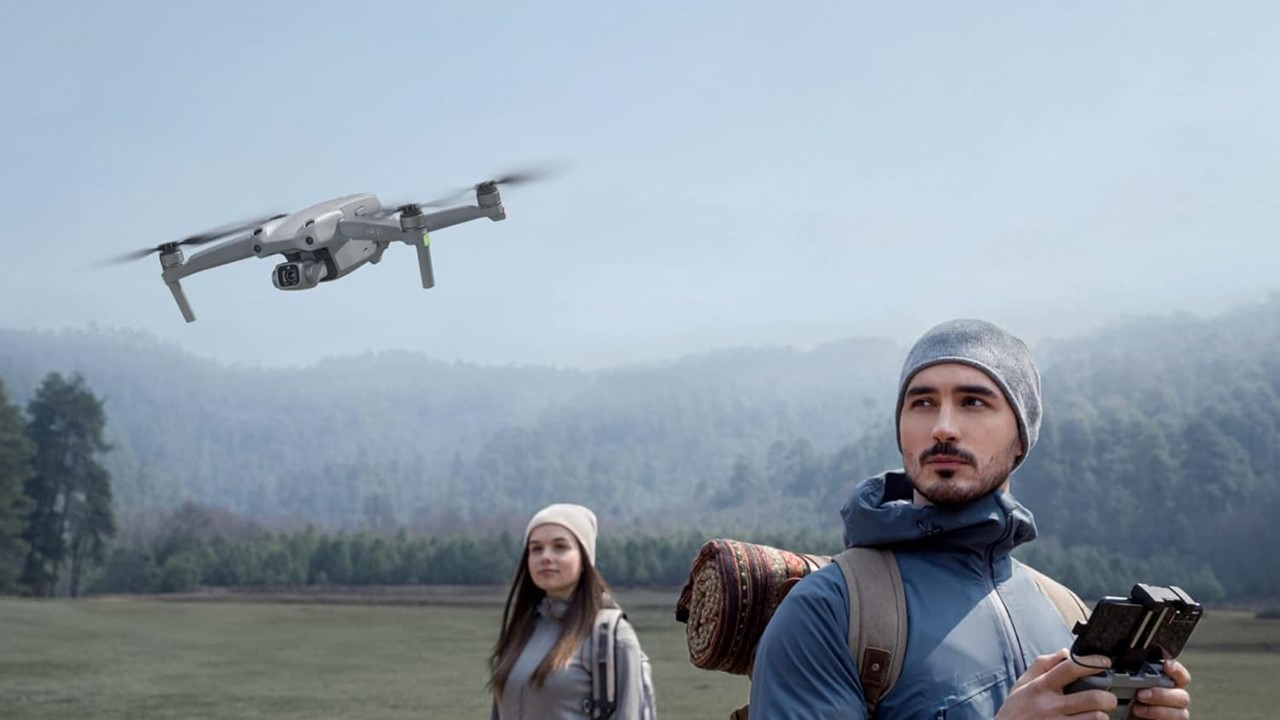When seeking the best long range drone with camera, we look beyond mere distance. We prioritize stable connectivity, crystal-clear image transmission, intelligent flight features, and reliable battery life.
Long-range aerial photography and exploration require professional-grade transmission systems, robust GPS modules, and 4K or higher-resolution cameras capable of delivering stunning footage from miles away.
Picture this: stunning vistas, mesmerizing coastlines, or bustling cityscapes, all from a bird’s-eye view. The quest for the perfect long-range drone is like a treasure hunt, and I’m your trusty guide to uncovering the hidden gems in the drone universe.
I’ve scoured the internet, dived deep into forums, and tapped into the wisdom of drone connoisseurs to bring you the crème de la crème of long-range drones. From camera quality that’ll leave you spellbound to flight times that seem to stretch on forever, we’ve got it all covered.
So, fasten your seatbelts (or propellers, in this case) as we embark on this exhilarating journey into the world of long-range drones. By the end of this article, you’ll have all the insider knowledge you need to pick your perfect flying companion.
Best Long Range Drone With Camera
DJI Air 2S: Where Quality Meets Distance
The DJI Air 2S strikes an impressive balance between camera excellence and long-range performance, making it one of the most versatile drones in its class. Equipped with a 1-inch 20MP CMOS sensor, it captures 5.4K video with remarkable clarity, outperforming many competing drones in both detail and dynamic range. Whether filming expansive landscapes or fast-moving subjects, the Air 2S delivers consistently sharp and vibrant footage.
What truly sets it apart is its OcuSync 3.0 transmission system, offering a maximum range of up to 12 km, ensuring smooth, low-latency video feed even in interference-heavy environments. Paired with up to 31 minutes of flight time, it gives pilots ample freedom to explore vast areas without worry.
Safety is another highlight. With four-direction obstacle sensing and Advanced Pilot Assistance Systems (APAS 4.0), it intelligently avoids collisions while maintaining flight stability. Intelligent modes like MasterShots, FocusTrack, and QuickShots make cinematic shots effortless even for beginners.
Compact yet highly capable, the DJI Air 2S is ideal for travelers, content creators, and aerial photography enthusiasts who demand both professional image quality and extended control range. Simply put, it’s where quality meets distance — perfectly.

DJI Avata: Long Range Drone
The DJI Avata is widely praised for its immersive FPV capabilities, but it also stands strong as a long-range drone, delivering impressive transmission performance for exploratory flight. Equipped with DJI’s O3+ transmission system, it offers a maximum range of up to 10 km, allowing pilots to venture far while maintaining a crystal-clear HD live feed through the DJI Goggles 2 or Integra. The low-latency video feed ensures smooth responsiveness, even at extended distances.
Despite its compact cinewhoop-style design, the Avata handles long-distance flights with surprising stability. Its GPS-based positioning and Hover Mode provide reassurance when flying beyond visual line of sight. The 18-minute flight time, while shorter than standard camera drones, is respectable given its power and performance. Combined with Return-to-Home functionality, it ensures reliable range-based missions without losing control.
The 4K/60fps camera with RockSteady and HorizonSteady stabilization keeps footage usable even during high-speed flight. Whether skimming across landscapes or diving into distant valleys, the Avata delivers both range and cinematic flair.
While not built for ultra-endurance mapping, the DJI Avata excels as a long-range FPV explorer, offering both reach and adrenaline in every flight.

Exploring The World Of Long-Range Drones
Before we wrap up, let’s shed some light on long-range drones and their capabilities. You see, every drone has a rated transmission range, which is the maximum distance it can maintain a video or radio link with the pilot.
But here’s the catch: drones have limited battery life, which dictates how far they can actually fly. In rare cases, a drone’s battery might carry it beyond its transmission range, but you’ll still need to bring it back home. Safety first, folks!
The Power Of Video Transmission
Now, let’s talk about the video transmission module – a vital component for long-range drones. It’s responsible for sending images to your FPV goggles or remote controller and receiving your commands. Along with the installed antennas, the video module determines a drone’s transmission range.
DJI offers a range of video transmission modules, with the O3+ being the latest powerhouse. The module plays a critical role in pushing the limits of how far your drone can venture.
What To Look For In A Best Long-Range Drone With Camera?
When shopping for a long-range drone, keep these factors in mind:
-
Transmission Module
This is the heart of the matter. A powerful transmission module is essential for long-distance flights.
-
Battery Life
Longer flights mean more distance covered. Most modern drones offer over 30 minutes of flight time.
-
Motor Power
Faster drones can cover more ground in less time.
-
Wind Resistance
A drone’s ability to handle strong winds affects its range.
-
Drone Aerodynamics
A well-designed drone can indirectly contribute to extended flight distances.
-
Country Regulations
Different countries have varying restrictions on drone flight distances. Be sure to know the rules!
In Closing
Long range drones are more than flying cameras — they are exploration tools unlocking entirely new perspectives. With growing advancements in signal transmission, AI tracking, and safety automation, the future of aerial connectivity is limitless.
And there you have it, folks – your comprehensive guide to the best long-range drones on the market. Whether you’re a pro seeking the ultimate aerial tool or a beginner itching to explore the skies, there’s a drone on this list for you. So, pick your favorite, spread your wings, and let your aerial adventures take flight!
FAQs About Long-Range Drone
Q: Do I need to register long-range drones with the FAA?
A: Toy drones and FAA regulations are interconnected, with weight being the key factor. Drones over 250 grams must be registered, but all drones on our list fall under this limit. Remember to check local drone laws when flying internationally.
Q: How can I ensure safe and responsible drone flying?
A: Fly away from large crowds, respect others’ property, and use common sense. Adhering to these guidelines will help you avoid potential trouble.
Q: What features should I consider when selecting a long-range drone?
A: When choosing a long-range drone, consider factors such as battery life, image stabilization, FPV (First Person View) range vs. drone range, modifiability for increased range, portability, GPS stability, and return-to-home functionality.
Q: Do all drones on your list return to home if they lose signal?
A: Yes, all the drones featured in our list are equipped with a return-to-home function in case of signal loss. This is a standard feature for most GPS drones.
Q: What is the legal range for flying a drone?
A: Drone regulations vary by country, but in general, you should keep your drone within line of sight. This usually means staying within a range well under 1km, as you shouldn’t fly further than what your eyes can see. Always check local regulations for specific guidance.
Q: Do range extenders actually work?
A: Yes, range extenders can be effective. They come in two types: reflectors and Wi-Fi repeaters. Reflectors improve signal quality by directing more signal toward the front of the antenna, while Wi-Fi repeaters amplify signals. Both can enhance signal strength and extend your drone’s range.
Q: What are the uses and advantages of long-range drones?
A: Long-range drones have various applications, including agriculture (for crop management), package delivery, exploration, surveillance, and mapping. Their advantages include extended operational space, better signal strength in interference-prone environments, and the ability to track moving objects at a distance.
Q: How can I prevent my drone from flying out of range?
A: Most drones allow you to set maximum flight ranges through the app, either as a “beginner mode” or by adjusting geofence settings. This helps you stay within legal limits and ensures your drone doesn’t go out of range.
Q: Will the drone return to home if the battery discharges?
A: Yes, most drones are programmed to return to home on low battery alerts. Some advanced models can even calculate the energy required to return safely and adjust their path accordingly.
Q: Can I transport objects over long distances using a drone?
A: While some drones, like the DJI Matrice 600, can carry significant weight (up to 6kg), most drones on our list are primarily designed for photography and are not suitable for transporting objects over long distances.
Q: What factors affect a drone’s range and signal strength?
A: Several factors can affect a drone’s range and signal strength, including physical obstacles like trees and buildings, Wi-Fi interference (especially in urban areas), and proximity to power lines. Flying in open areas and avoiding such obstacles is ideal for maximizing range and signal quality.

